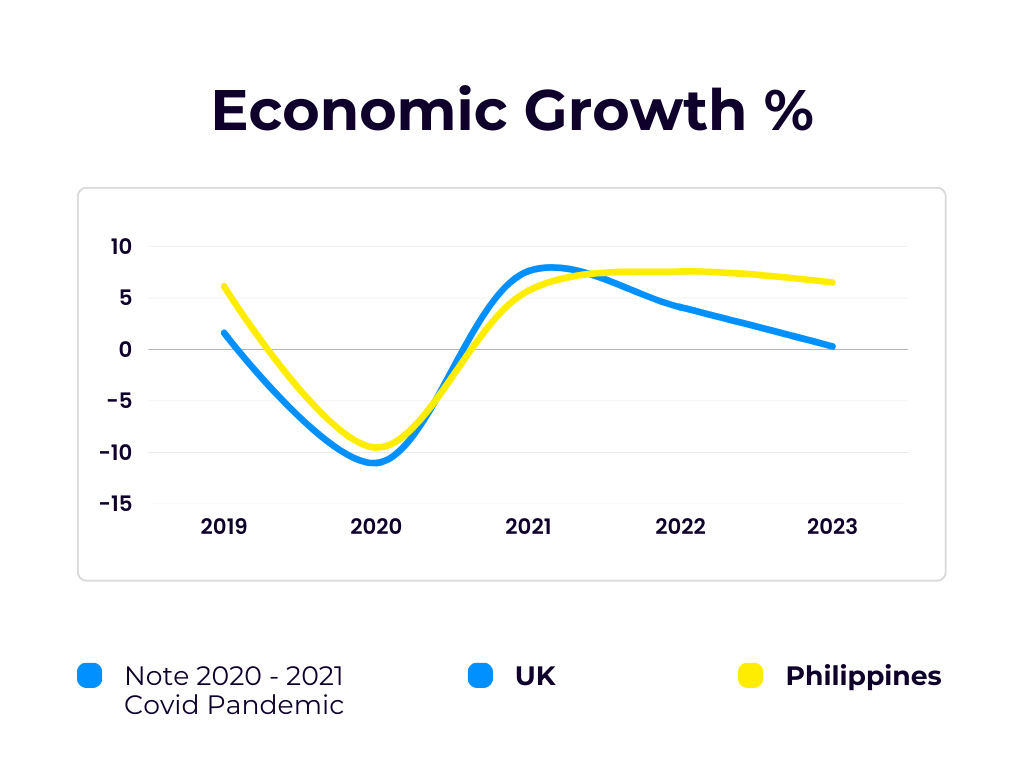Philippines' Remarkable Economic Surge in 2023

Amid the vast archipelago of Southeast Asia, the Philippines stands out in 2023, not just for its rich culture and pristine beaches but for its thriving economy, which has shown a positive influence on the residential real estate market.
Drawing from insights provided by McKinsey & Company, we'll navigate through the significant markers of the Philippines’ economic surge and delve into its pronounced implications for the residential real estate sector.
Rising Above Global Challenges
While many global economies are in the throes of uncertainty, the Philippines has displayed economic resilience. A growing GDP, powered by domestic consumption, a burgeoning service sector, and overseas remittances, has given rise to a buoyant middle class with enhanced purchasing power. This burgeoning middle class plays an instrumental role in shaping the residential real estate landscape.

How Residential Real Estate is Blooming:
Infrastructure and Urban Development: The government’s "Build, Build, Build" initiative, aimed at improving the nation’s infrastructure, has direct implications on residential areas. Enhanced connectivity drives up the desirability of living spaces near new infrastructures. Improved transportation and accessibility make suburban living more attractive, leading to the rise of new residential developments outside metro centers.
The Flourishing Middle Class: With economic growth, there's an undeniable rise in the middle class who demand comfortable living spaces. Their heightened purchasing power has led to a surge in demand for modern, amenity-rich residential properties. As they aspire for more refined lifestyles, residential developers are innovating, integrating both convenience and luxury in housing projects.
Influx from BPO and POGO Sectors: The growth of the Business Process Outsourcing (BPO) and Philippine Offshore Gaming Operators (POGO) sectors has led to an increased demand for residential units, especially in urban areas. The influx of employees from these sectors seeks quality housing solutions, resulting in the development of residential hubs near business centers.
Tourism Influencing Residential Choices: The Philippines’ tourism allure doesn’t just impact hospitality real estate. Many foreigners, entranced by the country's beauty, opt for long-term stays or even permanent relocation. This demand is leading to the rise of residential projects in tourist destinations, blending local culture with modern living.
Digital Transformation and Home Preferences: The accelerated adoption of digital technologies and remote work has changed residential preferences. Homes are no longer just living spaces but also potential workspaces. The demand for homes with study rooms, reliable internet connectivity, and peaceful surroundings is on the rise.
A Future Rooted in Growth
In 2023, the Philippines' economic tapestry, rich with opportunity and promise, is deeply interwoven with the residential real estate sector. With evolving preferences and the economic boom, residential real estate in the Philippines is not just about buildings and lands but about building dreams and creating sustainable futures. As the year progresses, it’s evident that the Philippines is not just shining; it’s thriving, offering a residential haven in the heart of Southeast Asia.

By Martin May-Clingo



JOIN MY MAILING LIST
Created with © systeme.io

